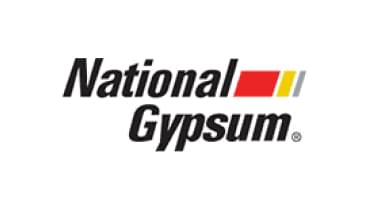
Sean Fitzgerald, PG, is a research geologist specializing in asbestos environmental studies.
National Gypsum was one of the largest asbestos product manufacturers of the 20th century. Asbestos litigation forced the company into bankruptcy in 1990. Approximately $347 million was put into a trust fund to handle future asbestos claims.

National Gypsum filed for bankruptcy a second time in 2002, resulting in the current National Gypsum Company Bodily Injury Trust in 2003. This fund, established with $347 million, was actually the company’s third foray into claims management. The first was a private agreement among companies and the second was an asbestos trust fund.
National Gypsum Company Trust Updates
Before its first bankruptcy, National Gypsum joined a private, voluntary industry system known as the Wellington Agreement in 1985. Insurers and asbestos companies were able to handle claims together through the National Claims Facility, but individuals could still bring lawsuits to court. The mesothelioma compensation people received varied.
The National Claims Facility ended after 3 years. Facing more than $1 billion in asbestos-related debt, National Gypsum filed for bankruptcy in 1990. The company emerged from the process in 1993 and established its first asbestos trust fund, National Gypsum Corporation Settlement Trust. Funded with more than $5 million in cash and $600 million in insurance, it lacked enough funds by 1997. National Gypsum once again filed for bankruptcy and developed its current trust fund.
If you have mesothelioma or lung cancer from exposure to National Gypsum’s asbestos products, an experienced mesothelioma lawyer can assist you in pursuing compensation for medical expenses and other costs from the National Gypsum Company Bodily Injury Trust. As with other asbestos trust funds, there is a deadline to file. Your attorney will ensure your claim is properly filed on time with all of the documentation needed.
Patient Advocates at The Mesothelioma Center are available to you and your family to answer questions about financial assistance and connect you with legal professionals experienced with trust fund claims. They can also match you with medical experts for second opinions or treatment and provide ongoing personal support throughout your mesothelioma journey.

Gain access to trust funds, grants and other forms of compensation for you or your loved ones.
Get Help NowNational Gypsum was facing about 45,000 unresolved asbestos lawsuits as of 1992. Many of these cases were settled out of court before going to trial or through its participation in the Wellington Agreement or subsequent trust funds.
Notable Asbestos Lawsuits Against National Gypsum
When the company filed for bankruptcy in 1990, all lawsuits were paused. Since the creation of its asbestos trust funds, all asbestos-related claims go through the trust rather than through the courts.
National Gypsum began in 1925 and started using asbestos in its products in 1933. Gold Bond, named for a $5,000 “gold bond” guarantee asserting its premium wallboards were superior to competitors’, became its most well-known product. Under this brand, National Gypsum manufactured many building materials containing asbestos.
The company acquired Universal Gypsum and Atlantic Gypsum and produced materials under three major brands: Gold Bond, ProForm and PermaBase. National Gypsum used asbestos in at least 30 different building products.
The company stopped using asbestos in the early 1980s. By 1985, National Gypsum faced roughly 4,500 asbestos-related lawsuits from people exposed to its products. Asbestos exposure is the primary cause of mesothelioma. It can also lead to serious diseases such as lung cancer and asbestosis.
National Gypsum produced many asbestos-containing building materials for walls, ceilings and siding. The company added asbestos to these products to make them durable, fire-resistant and better at insulating. Workers and installers handling these materials faced an increased risk of exposure.
National Gypsum’s Top Asbestos-Containing Products
Workers handling or cutting these materials risked releasing asbestos fibers into the air. Asbestos exposure could occur during installation, renovation or repair, making safety precautions and professional removal critical.
Workers who made National Gypsum’s asbestos products faced a high risk of breathing in toxic asbestos fibers. National Gypsum factory workers could inhale fibers during production, putting them at risk of mesothelioma.
Construction workers who installed, cut or disturbed these products also faced higher exposure. A comprehensive review from 2024 of construction workers confirmed the construction sector is at particularly high risk of asbestos exposure.
Higher Risk Jobs
Drywall workers were especially at risk before the mid-1970s, when joint compounds contained chrysotile asbestos. Sanding these compounds released the most fibers into the air. General construction workers and DIY home renovators could also be exposed.
When workers can unintentionally bring home asbestos dust on their clothing, hair or skin, their loved ones may experience secondary exposure. Similar to primary exposure, secondary exposure can cause mesothelioma or other asbestos-related diseases.
Recommended ReadingStay up-to-date on treatment, research, clinical trials, doctors and survivors
The information on this website is proprietary and protected. It is not a substitute for professional medical advice, diagnosis or treatment. Any unauthorized or illegal use, copying or dissemination will be prosecuted. Please read our privacy policy and terms of service for more information about our website.
This website and its content may be deemed attorney advertising. Prior results do not predict a similar outcome.
The Mesothelioma Center’s claim as the most trusted resource is based on our more than 150 5-star Google and BBB reviews. Our organization also helps more than half of all mesothelioma patients annually diagnosed.
Your web browser is no longer supported by Microsoft. Update your browser for more security, speed and compatibility.
If you are looking for mesothelioma support, please contact our Patient Advocates at (855) 404-4592
The Mesothelioma Center at Asbestos.com has provided patients and their loved ones the most updated and reliable information on mesothelioma and asbestos exposure since 2006.
Our team of Patient Advocates includes a medical doctor, a registered nurse, health services administrators, veterans, VA-accredited Claims Agents, an oncology patient navigator and hospice care expert. Their combined expertise means we help any mesothelioma patient or loved one through every step of their cancer journey.
More than 30 contributors, including mesothelioma doctors, survivors, health care professionals and other experts, have peer-reviewed our website and written unique research-driven articles to ensure you get the highest-quality medical and health information.
My family has only the highest compliment for the assistance and support that we received from The Mesothelioma Center. This is a staff of compassionate and knowledgeable individuals who respect what your family is experiencing and who go the extra mile to make an unfortunate diagnosis less stressful. Information and assistance were provided by The Mesothelioma Center at no cost to our family.LashawnMesothelioma patient’s daughter


Asbestos.com. (2025, December 12). National Gypsum Company. Retrieved December 18, 2025, from https://www.asbestos.com/companies/national-gypsum/
"National Gypsum Company." Asbestos.com, 12 Dec 2025, https://www.asbestos.com/companies/national-gypsum/.
Asbestos.com. "National Gypsum Company." Last modified December 12, 2025. https://www.asbestos.com/companies/national-gypsum/.
An occupational scientist or another expert who specializes in occupational hazards reviewed the content on this page to ensure it meets current scientific standards and accuracy.

Sean Fitzgerald, PG, is a research geologist specializing in asbestos environmental studies.
Our fact-checking process begins with a thorough review of all sources to ensure they are high quality. Then we cross-check the facts with original medical or scientific reports published by those sources, or we validate the facts with reputable news organizations, medical and scientific experts and other health experts. Each page includes all sources for full transparency.
Please read our editorial guidelines to learn more about our content creation and review process.
